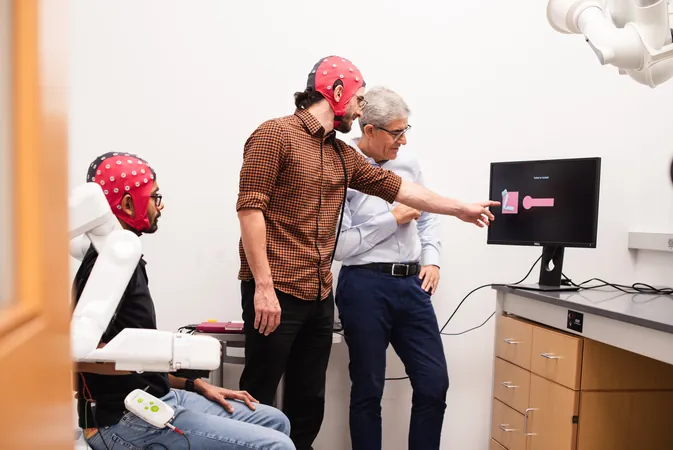
Revolutionary Spinal Stimulation Cuts Brain-Computer Interface Learning Time by Half!
2025-06-12
Author: Mei
A Game-Changer in Brain-Computer Interfaces
Imagine controlling a robotic arm or wheelchair just by thinking! With Brain-Computer Interfaces (BCIs), this is already a reality, but many users find grappling with these systems a slow and frustrating journey.
The Breakthrough Discovery
But researchers at The University of Texas at Austin have made a groundbreaking discovery that promises to change everything: a gentle electrical nudge to the spine can accelerate BCI learning dramatically.
In a recent study published in the *Proceedings of the National Academy of Sciences*, scientists from the Cockrell School of Engineering and Dell Medical School found that noninvasive spinal stimulation helps users focus better, effectively slashing learning time in half!
Unlocking New Possibilities
"By using spinal stimulation to prime the brain, we're not just speeding up learning – we’re also enabling those who have struggled with BCIs to gain control," said Professor José del R. Millán from the Cockrell School.
This technique could pave the way for revolutionary advancements in motor rehabilitation and assistive technologies for those in need!
How It Works
BCIs work by detecting brain signals tied to movement intentions and translating them into commands for devices. They rely on specific brain activity patterns known as sensorimotor rhythms generated when individuals envision moving a limb.
Using a technique called transcutaneous electrical spinal stimulation, researchers deliver mild electrical pulses to the spinal cord. This temporary nudging can help stabilize and enhance the brain activity needed to control BCIs.
Thrilling Test Results
In their experiments, 20 healthy participants and two individuals with spinal cord injuries were divided into groups: one received spinal stimulation before training, while the other did not. The results were astounding!
1. **Faster Learning**: Those who received spinal stimulation improved their BCI performance after just two sessions, while the control group took five.
2. **Improved Accuracy**: By the study's end, the stimulation group had much higher accuracy and stronger brain signals!
3. **Retention**: Remarkably, the benefits lingered for at least a week post-training, showing that users retained their skills.
Opening Doors for Everyone
Even more exciting? Individuals who had previously struggled to learn BCI control were able to succeed after this spinal stimulation protocol. This could widen access to BCIs for countless potential users.
The Future of Rehabilitation
Currently, BCIs assist individuals with paralysis in regaining independence. But this innovative technique could also enhance rehabilitation for stroke survivors and speed up brain recovery.
Enhanced BCI control has the potential to boost brain plasticity—the brain's ability to reorganize and form new connections, which is essential for recovery.
Limitless Potential Ahead
While this study mainly focused on hand movements, the researchers believe their method can extend to more complex tasks, like operating robotic limbs with intricate movements. They also aim to explore its use among individuals with severe neurological conditions.
Professor Millán sums it up best: "Our ultimate goal is to improve the quality of life for people with motor impairments. Whether it's helping someone move their arm or operate a wheelchair with their thoughts, this technology can truly make a difference!"





 Brasil (PT)
Brasil (PT)
 Canada (EN)
Canada (EN)
 Chile (ES)
Chile (ES)
 Česko (CS)
Česko (CS)
 대한민국 (KO)
대한민국 (KO)
 España (ES)
España (ES)
 France (FR)
France (FR)
 Hong Kong (EN)
Hong Kong (EN)
 Italia (IT)
Italia (IT)
 日本 (JA)
日本 (JA)
 Magyarország (HU)
Magyarország (HU)
 Norge (NO)
Norge (NO)
 Polska (PL)
Polska (PL)
 Schweiz (DE)
Schweiz (DE)
 Singapore (EN)
Singapore (EN)
 Sverige (SV)
Sverige (SV)
 Suomi (FI)
Suomi (FI)
 Türkiye (TR)
Türkiye (TR)
 الإمارات العربية المتحدة (AR)
الإمارات العربية المتحدة (AR)